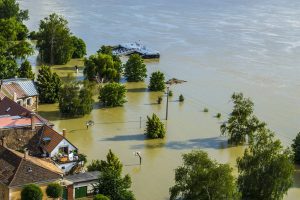“Rebuild, Restore, and Renew Your Home After Flood Damage with 5 Ideas!”
Introduction
Flood damage can be devastating to your home, leaving you with a lot of work to do in order to get it back to its original condition. Renovating your home after flood damage can be a daunting task, but it doesn’t have to be. Here are five ideas for renovating your home after flood damage that can help you get your home back to its original condition. From replacing damaged flooring to installing new appliances, these ideas can help you get your home back to its pre-flood condition.
Assessing the Damage: What to Look For and How to Begin

Assessing the Damage: What to Look For and How to Begin
When disaster strikes, it can be difficult to know where to start. Whether it’s a natural disaster, a fire, or a flood, the damage can be overwhelming. But assessing the damage is the first step in the recovery process. Knowing what to look for and how to begin can help you get back on your feet faster.
The first thing to do is to assess the safety of the area. Make sure that the area is safe to enter and that there are no hazards present. If there are any downed power lines or other dangerous conditions, contact the appropriate authorities before entering the area.
Once you’ve determined that the area is safe, it’s time to start assessing the damage. Look for structural damage to the building, such as broken windows, collapsed walls, or damaged roofs. Also, check for water damage, such as flooding or water seepage. If there is any water damage, it’s important to act quickly to prevent further damage.
Next, check for any electrical damage. Look for exposed wires, damaged outlets, or other signs of electrical damage. If you find any, contact an electrician immediately.
Finally, check for any damage to your belongings. Look for broken furniture, damaged electronics, or any other items that may have been damaged. If you find any, make a list of the items and their estimated value. This will help you when filing an insurance claim.
Assessing the damage can be a daunting task, but it’s an important step in the recovery process. Knowing what to look for and how to begin can help you get back on your feet faster. Take the time to assess the damage and make sure that the area is safe before entering. With a little bit of effort, you can begin the process of rebuilding and recovering from the disaster.
Choosing the Right Materials for Flood-Resistant Renovations
Renovating a home can be a daunting task, especially when it comes to making sure it is flood-resistant. With the right materials, however, you can make sure your home is prepared for any potential flooding. Here are some tips for choosing the right materials for flood-resistant renovations.
First, consider the type of flooding you are likely to experience. Different materials are better suited for different types of flooding. For example, if you live in an area prone to flash flooding, you may want to use materials that are more resistant to water damage, such as concrete or stone. On the other hand, if you live in an area prone to slow-moving floods, you may want to use materials that are more absorbent, such as wood or fiberboard.
Second, consider the cost of the materials. Flood-resistant materials can be expensive, so it is important to weigh the cost of the materials against the potential damage that could be caused by flooding. If the cost of the materials is too high, you may want to consider other options, such as installing flood barriers or elevating your home.
Third, consider the durability of the materials. Flood-resistant materials should be able to withstand the force of the water and the wear and tear of the elements. Materials such as concrete and stone are more durable than wood or fiberboard, so they may be a better choice for flood-resistant renovations.
Finally, consider the aesthetic appeal of the materials. Flood-resistant materials should be attractive and blend in with the rest of your home. If you are renovating a historic home, for example, you may want to use materials that are more in keeping with the style of the home.
By taking the time to consider the type of flooding you are likely to experience, the cost of the materials, the durability of the materials, and the aesthetic appeal of the materials, you can make sure your home is prepared for any potential flooding. With the right materials, you can make sure your home is safe and secure for years to come.
Strategies for Minimizing Mold and Mildew After Flood Damage
Floods can cause extensive damage to homes and businesses, and one of the most serious issues is the growth of mold and mildew. Mold and mildew can cause serious health problems, and can also cause further damage to the structure of the building. Fortunately, there are steps that can be taken to minimize the growth of mold and mildew after a flood.
The first step is to act quickly. Mold and mildew can start to grow within 24 hours of a flood, so it is important to start the cleanup process as soon as possible. Remove any standing water and wet materials, and use fans and dehumidifiers to dry out the area. It is also important to wear protective clothing, such as gloves, goggles, and a face mask, to protect yourself from mold spores.
The next step is to clean and disinfect the area. Use a solution of one part bleach to ten parts water to kill any mold and mildew that may be present. Be sure to wear protective clothing when cleaning, and be sure to ventilate the area.
The third step is to repair any damage that may have been caused by the flood. This includes repairing any water-damaged walls, floors, and ceilings. It is also important to replace any insulation that may have been damaged by the flood.
Finally, it is important to take steps to prevent future mold and mildew growth. This includes making sure that the area is well-ventilated, and that any leaks or moisture problems are addressed. It is also important to use mold-resistant materials when making repairs.
By following these steps, you can minimize the growth of mold and mildew after a flood. Taking action quickly and using the right materials can help to protect your home or business from further damage. Don’t let a flood ruin your property – take action today to minimize the growth of mold and mildew.
Tips for Working with Insurance Companies After a Flood
1. Be prepared. Before you contact your insurance company, make sure you have all the necessary documents and information ready. This includes photos of the damage, receipts for any repairs you have already made, and any other relevant documents.
2. Know your policy. Read through your policy carefully and make sure you understand what is covered and what is not. This will help you know what to expect from your insurance company.
3. Document everything. Keep detailed records of all your conversations with your insurance company. This includes dates, times, and the names of the people you spoke with.
4. Stay organized. Create a file for all your documents related to the flood and your insurance claim. This will help you keep track of everything and make sure you don’t miss any important details.
5. Be patient. Insurance companies can take a long time to process claims, so don’t get frustrated if it takes a while. Stay calm and be persistent in following up with your insurance company.
6. Don’t be afraid to ask questions. If you don’t understand something, don’t be afraid to ask questions. Your insurance company should be able to answer any questions you have.
7. Don’t give up. If your claim is denied, don’t give up. You may be able to appeal the decision or negotiate a better settlement.
Floods can be devastating, but with the right preparation and attitude, you can work with your insurance company to get the help you need. Don’t be afraid to stand up for yourself and fight for the compensation you deserve.
Creative Solutions for Restoring Your Home After Flood Damage
Floods can be devastating, leaving behind a trail of destruction and chaos. But with the right approach, you can restore your home to its former glory. Here are some creative solutions for restoring your home after flood damage.
1. Start with the basics. Before you begin any major repairs, make sure to take care of the basics. This includes removing any standing water, drying out the area, and cleaning up any debris. This will help prevent further damage and make the restoration process easier.
2. Invest in waterproofing. Waterproofing your home is one of the best ways to protect it from future floods. Investing in waterproofing materials such as sealants, membranes, and coatings can help keep your home safe from water damage.
3. Replace damaged materials. If any of your home’s materials have been damaged by the flood, it’s important to replace them. This includes carpets, drywall, insulation, and other materials. Make sure to use materials that are designed to withstand water damage.
4. Invest in a sump pump. A sump pump can help keep your basement dry and prevent future flooding. Investing in a quality sump pump can help protect your home from future floods.
5. Consider raising your home. If your home is in a flood-prone area, you may want to consider raising it. This can help protect your home from future floods and make it easier to restore after a flood.
Restoring your home after a flood can be a daunting task. But with the right approach, you can restore your home to its former glory. By taking the time to waterproof your home, replace damaged materials, and invest in a sump pump, you can protect your home from future floods and make the restoration process easier.
Conclusion
Renovating your home after flood damage can be a daunting task, but with the right planning and preparation, it can be done. By following the five ideas outlined in this article, you can make sure that your home is restored to its pre-flood condition. From assessing the damage and creating a plan of action to hiring a professional contractor and taking the necessary steps to prevent future flooding, these five ideas can help you get your home back to its original condition. With the right approach, you can make sure that your home is safe and secure for years to come.






